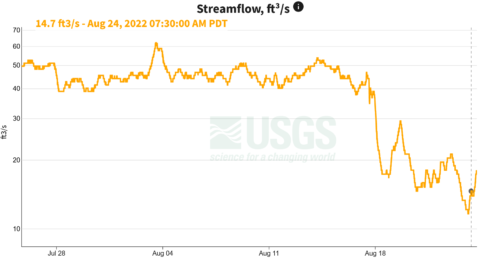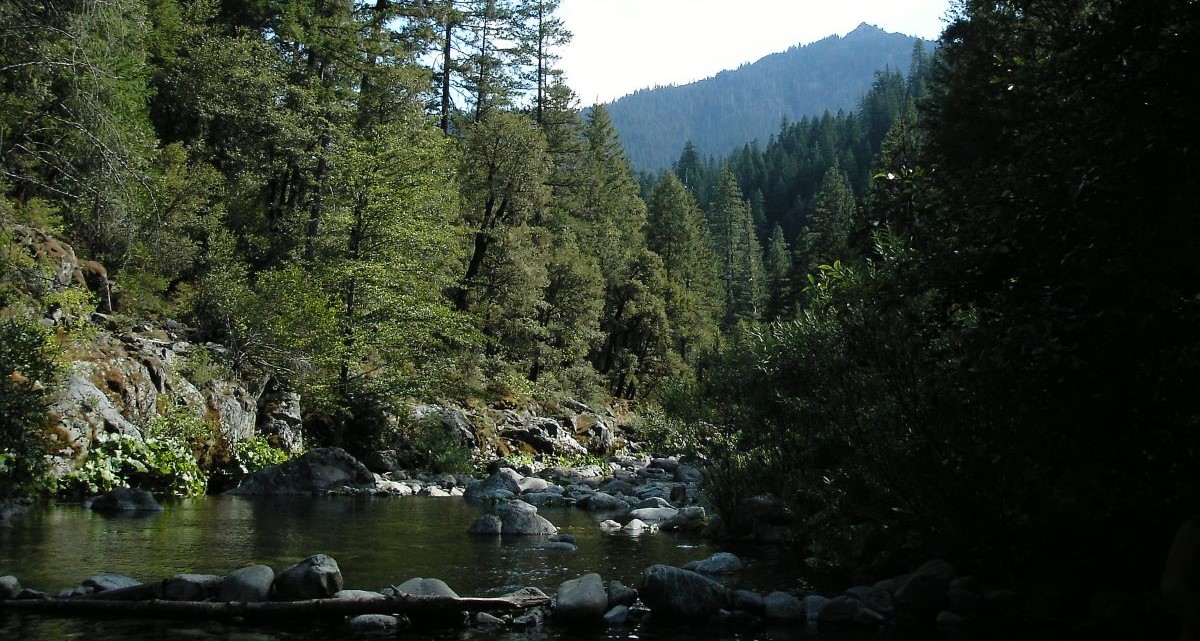From the State Water Resources Control Board:
As California heads into a fourth year of drought, the State Water Resources Control Board has continued to protect water supplies and the environment by imposing curtailments in multiple Northern California watersheds: Russian River, Scott and Shasta Rivers, Mill and Deer Creeks and the Delta.
 On August 17, the Shasta River Water Association, which is subject to curtailments, informed the State Water Board that it would begin diverting water from the Shasta River the same day. Before the association’s unlawful diversions began that day, the flow rate at the Yreka USGS gauge was 46.8 cubic feet per second (cfs). Since then, the river’s flow rate has dropped significantly, falling to as low as 11.7 cubic feet per second during the early morning of August 24. A minimum flow rate of 50 cfs is required per the board’s emergency regulation to help juvenile salmonids survive and to support the migration of mature fall-run Chinook and coho salmon, which is expected to begin in early September.
On August 17, the Shasta River Water Association, which is subject to curtailments, informed the State Water Board that it would begin diverting water from the Shasta River the same day. Before the association’s unlawful diversions began that day, the flow rate at the Yreka USGS gauge was 46.8 cubic feet per second (cfs). Since then, the river’s flow rate has dropped significantly, falling to as low as 11.7 cubic feet per second during the early morning of August 24. A minimum flow rate of 50 cfs is required per the board’s emergency regulation to help juvenile salmonids survive and to support the migration of mature fall-run Chinook and coho salmon, which is expected to begin in early September.
The board has taken immediate and necessary enforcement action. On August 18, the board’s enforcement team issued a Notice of Violation informing the association that their water diversions are illegal. On August 19, enforcement staff issued a draft Cease and Desist Order.
The association could be subject to penalties of up to $500 per day for violating the curtailment order and up to $10,000 daily for violating the Cease and Desist order if it is adopted by the board.
The association’s contention that its diversions are necessary for fire suppression and livestock watering is invalid. Should a fire occur, Cal Fire has access to the river as needed. Additionally, the curtailment regulation already considered exceptions for minimum human health and safety needs, as well as for some livestock. The association has not applied for any exceptions to the curtailment order, and its diversions are in excess of the amounts set forth for these exceptions.
Our staff is closely monitoring flow conditions and coordinating with our partners at the Department of Fish and Wildlife and NOAA Fisheries.
Background
The State Water Board’s authority to enforce ongoing curtailments in the state’s watersheds is established by emergency regulations adopted by the board.
The emergency regulation for the Scott and Shasta Rivers was readopted on July 29, and curtailments in the Shasta River watershed are currently in effect due to severe drought conditions that imperil sensitive fisheries.







